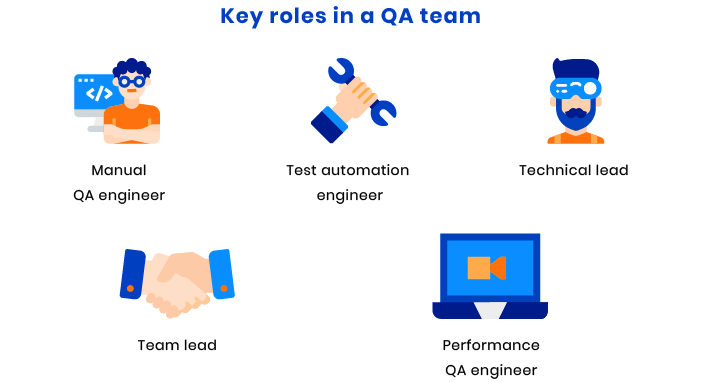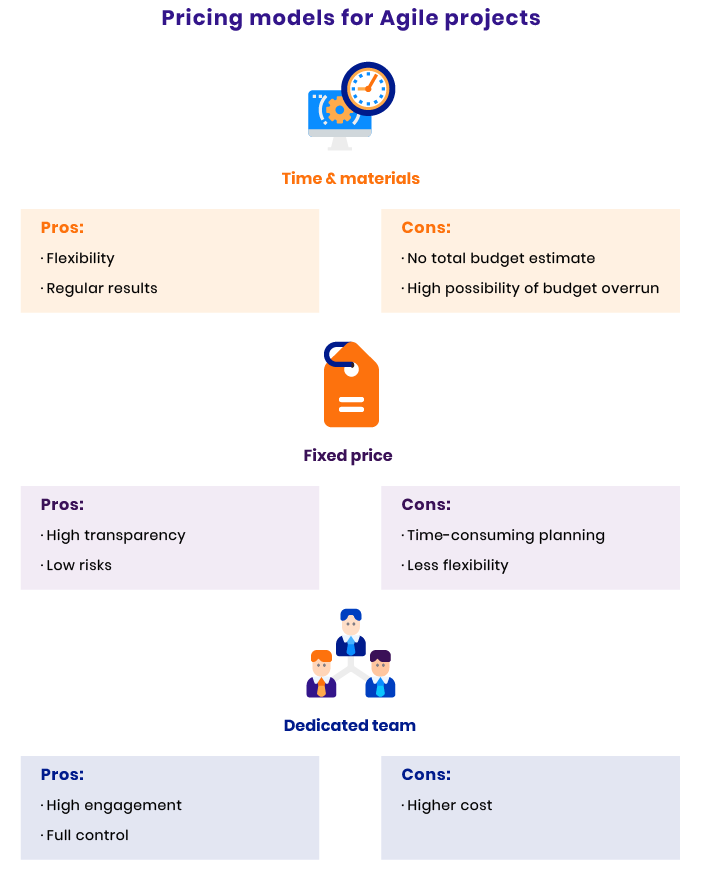-
Product Management
Software Testing
Technology Consulting
-
Multi-Vendor Marketplace
Online StoreCreate an online store with unique design and features at minimal cost using our MarketAge solutionCustom MarketplaceGet a unique, scalable, and cost-effective online marketplace with minimum time to marketTelemedicine SoftwareGet a cost-efficient, HIPAA-compliant telemedicine solution tailored to your facility's requirementsChat AppGet a customizable chat solution to connect users across multiple apps and platformsCustom Booking SystemImprove your business operations and expand to new markets with our appointment booking solutionVideo ConferencingAdjust our video conferencing solution for your business needsFor EnterpriseScale, automate, and improve business processes in your enterprise with our custom software solutionsFor StartupsTurn your startup ideas into viable, value-driven, and commercially successful software solutions -
-
- Case Studies
- Blog
Quality Assurance in Agile Development: How to Incorporate a QA Team into Your Project
Agile is one of the leading methodologies in the modern world of development, and it’s impossible to imagine it without a QA team. The thing is that Agile is about iterational product development, and each iteration needs a quality check. Thus, the role of quality assurance teams in Agile shouldn’t be underestimated.
Keep on reading to find out the importance of a QA team for your project as well as the best ways to ensure efficient cooperation between your developers and your QA team.
Roles and responsibilities in a QA team
To provide clients with the fastest, most effective, and highest quality results, QA teams usually incorporate a number of professionals with different responsibilities. The following are the most common roles in a QA team.

Let’s have a closer look at QA responsibilities in Agile development:
- Manual QA engineers are responsible for manual testing that’s performed when automated testing is impossible or unnecessary. Manual testers check your product from the end user’s perspective and ensure that everything works as it should.
- Test automation engineers are in charge of developing scripts for automated tests that ensure fast and effective checks of your product. They also execute and maintain automated test plans.
- Technical leads are in charge of solving technical issues. Moreover, they can also be responsible for sticking to a schedule and handling problems that appear during the testing process.
- Team leads are responsible for solving issues connected to people and processes.
- Performance QA engineers are in charge of testing your product’s stability, responsiveness, and operating speed under peak load.
This is just an example of the role distribution in a quality assurance team and isn’t the only possible variant. The number and duties of QA team members can vary from company to company. There might be more or fewer roles inside a team, and one person can perform several roles. In a large team, there might be several manual or test automation engineers. Here at RubyGarage, our QA team has all the specialists listed above to provide you with the best level of quality assurance.
How to incorporate a QA team into an Agile development process
A QA team should perform quality checks at every step of product development. Below, we list the best practices to incorporate a QA team into an Agile development process.
#1 Allow testers to participate in every stage of development
One of the core ideas of the Agile methodology is to involve testers in product development from the very beginning. With quality assurance teams participating in every stage of development, you can make sure every new feature operates smoothly. According to a report by IBM, it’s up to 30 times cheaper to detect and fix bugs at the design and architecture stage than it is to do so after a product is released.
#2 Engage everyone in the quality assurance process
The quality of a product isn’t solely the responsibility of the QA team. It also depends on a number of other things such as the choice of technologies and tools, the quality of code and the product architecture, and the quality of all third-party components.
Here’s what you can do to improve the quality of your product apart from testing:
- Follow programming principles. The quality of code depends on the principles developers use while working on it. Here are the main principles applied in object-oriented programming (OOP) that can help you write high-quality code that’s easy to test: Don’t Repeat Yourself (DRY), Keep It Simple Stupid (KISS), You Ain’t Gonna Need It (YAGNI), and SOLID. SOLID, in turn, includes five principles: Single Responsibility, Open/Closed, Liskov Substitution, Interface Segregation, and Dependency Inversion.
- Use a test-driven development (TDD) approach. The idea of TDD is that writing code starts with a developer creating a test that will check the code. To write a workable test, a developer should clearly understand the aim of the code. Once the test is ready, the developer writes code that satisfies all test conditions. This way, the code has a minimum number of bugs so it’s easier for a tester to check the rest.
- Create a modular code structure. Modules are separate program files that can be inserted and extracted from code without influencing other architectural components. Such self-sustainability allows developers to work with different modules separately and be sure that changes won’t cause bugs or crashes anywhere in the system.
- Pay attention to technical debt. The notion of technical debt implies that when you develop a product, you can do it in two ways: either quickly but imperfectly or slowly but with more attention to details. Technical debt is made up of all those things you’ll need to work on later to improve your product if you’ve chosen the faster way. To pay down technical debt means to add time for code refactoring in each sprint to improve code quality and keep it at a sufficient level.
#3 Establish efficient cooperation between teams
During Agile development, developers and quality assurance teams have to communicate all the time. That’s why it’s essential to ensure efficient interaction between them to achieve the best results. Here’s how you can do it:
Agree on the workflow
This is the first thing you should agree on with your QA team to achieve the best results. As a rule, every team has its own workflow, and the point here is to decide how these workflows will overlap. Your development and QA team should inform each other of how processes are built in their respective companies to gain mutual understanding.
Appoint responsible team members
This step is about defining what tasks each team member will perform during the project and about deciding who is responsible for communication between the teams. Understanding who’s responsible for what helps developers and testers communicate efficiently. Teams can avoid misunderstandings when they know who they can approach to help them solve a specific problem.
Choose a bug reporting program and task management software
To ensure effective communication between teams, it’s important to inform the development team about bugs as soon as they’re discovered. There are dozens of tools that allow for this such as monday.com, Airbrake.io, backlog, and ReQtest.
Another thing you should take into account is the importance of using task management software. Online tools such as Trello and Jira help track progress with maximum convenience for the whole team.
Before starting your cooperation with an external QA team, agree on the programs you’ll use while working on the project.
Choose a means of communication
Choose a means of communication that best suits your teams. As a rule, teams use several apps for different purposes.
To organize meetings with a remote team, companies often opt for online conference tools like Google Meet, Skype, or Zoom. To solve work issues immediately, it’s possible to use Slack or Skype. If the development and quality assurance teams are located close to each other, it can be reasonable to arrange several face-to-face meetings for better cooperation.
#4 Automate everything that can be automated
When we speak about Agile, we often mention continuous integration and continuous deployment (CI/CD). This approach is often used alongside Agile methodologies.
The idea of continuous integration is to add new builds to a codebase as often as possible. Doing this makes it easier to track the appearance of bugs, since autotests check new builds right away.
Continuous deployment is regarded as a follow-up to continuous integration. The idea of continuous deployment is to release every new feature to production automatically, without human intervention.
Applying a CI/CD approach helps both developers and QA teams find bugs early and get better control over product development.
What pricing model to choose for your Agile project
There are different pricing models that can be applied when working with an external QA team. To make such cooperation efficient, it’s important to choose the pricing model that best suits your requirements. These three models are best suited to Agile projects.

Time & materials
With this pricing model, the client defines the scope of work and pays for the time the QA team spends performing it. For example, a client and a quality assurance team can agree on the length of a sprint and tasks it should incorporate. Once the sprint is over, the team delivers the results and the client pays for the time spent.
Pros of the time & materials model
The first advantage of this model is flexibility. By flexibility, we mean that the client and the QA team can form the scope of work for each sprint. Sprints may last from two to four weeks depending on the tasks to be done.
Regular results are another benefit. The time and materials model allows a client to get the expected results at the end of each sprint, the timeline for which is always agreed beforehand.
Cons of the time & materials model
It might be challenging to estimate the total budget when working with time and materials, especially for a startup. When developing a new product, it’s difficult to foresee how many sprints will be necessary to achieve the final goal, which can lead to budget overruns.
Fixed price
This model entails estimating and fixing the price of the whole project at the beginning. With a fixed price model, the QA team analyzes tasks, requirements, and deadlines and sets the price. This model better suits small projects or those that don’t require a lot of scope alterations.
Pros of the fixed price model
High transparency is the main advantage of the fixed price model, since it requires the client and quality assurance team to discuss all requirements including technical tasks, deadlines, documentation, and pricing beforehand.
Low risks are another benefit. Since all conditions of cooperation are discussed in advance, the client isn’t responsible for overwork or force majeure circumstances. Consequently, they aren’t going to pay more if the QA team needs more time to finish the tasks.
Cons of the fixed price model
Applying this model might require more time-consuming planning than any other model. Since every detail of cooperation should be discussed before the beginning of the project, it’s necessary to pay close attention to every detail.
Less flexibility means that if there’s a need to change the scope of work, those changes should be estimated separately. As a result, the QA team and client will have to sign an additional agreement and the client will have to pay extra for the altered requirements.
Dedicated team
In this model, the client hires a QA team for a period of time during which the team works only on the client’s projects. This is a great pricing model for long-term projects with unclear requirements. It’s also suited to clients who don’t have enough in-house professionals to perform the job.
Pros of the dedicated team model
High engagement is what you get when you hire a dedicated quality assurance team, since they work only on your project for the contract period.
Another great benefit is full control over the project and the team. When hiring a dedicated team, you can require them to follow specific approaches and methodologies as well as your own corporate culture to achieve the best results.
Cons of the dedicated team model
Using this pricing model might be more expensive than any other model. When you employ a dedicated team, your expenses equal the monthly salaries of all team members for the duration of your cooperation and some administrative costs.
How to build successful cooperation with an external QA team
Once you find an experienced quality assurance team that can handle your project, make sure you agree on all details concerning your cooperation in advance. This will provide you a clear understanding between teams so your expectations will be fulfilled.
FAQ
-
Roles inside a QA team can vary from company to company. However, these are the main positions needed to ensure successful quality assurance activities:
- Manual QA engineer
- Test automation engineer
- Technical lead
- Team lead
- Performance QA engineer
-
There are several steps you should follow to get the maximum benefit from your quality assurance activities when following an Agile methodology:
- Involve testers in every stage of development
- Distribute responasibilities clearly
- Agree on a bug reporting system to use
- Decide on a means of communication
-
Successful cooperation depends on several factors, and here’s what you can do to achieve it:
- Start testing early
- Build an efficient and transparent model of cooperation
- Choose a suitable pricing model
Contact our QA team if you’re looking for professionals to handle all testing tasks on your project.










